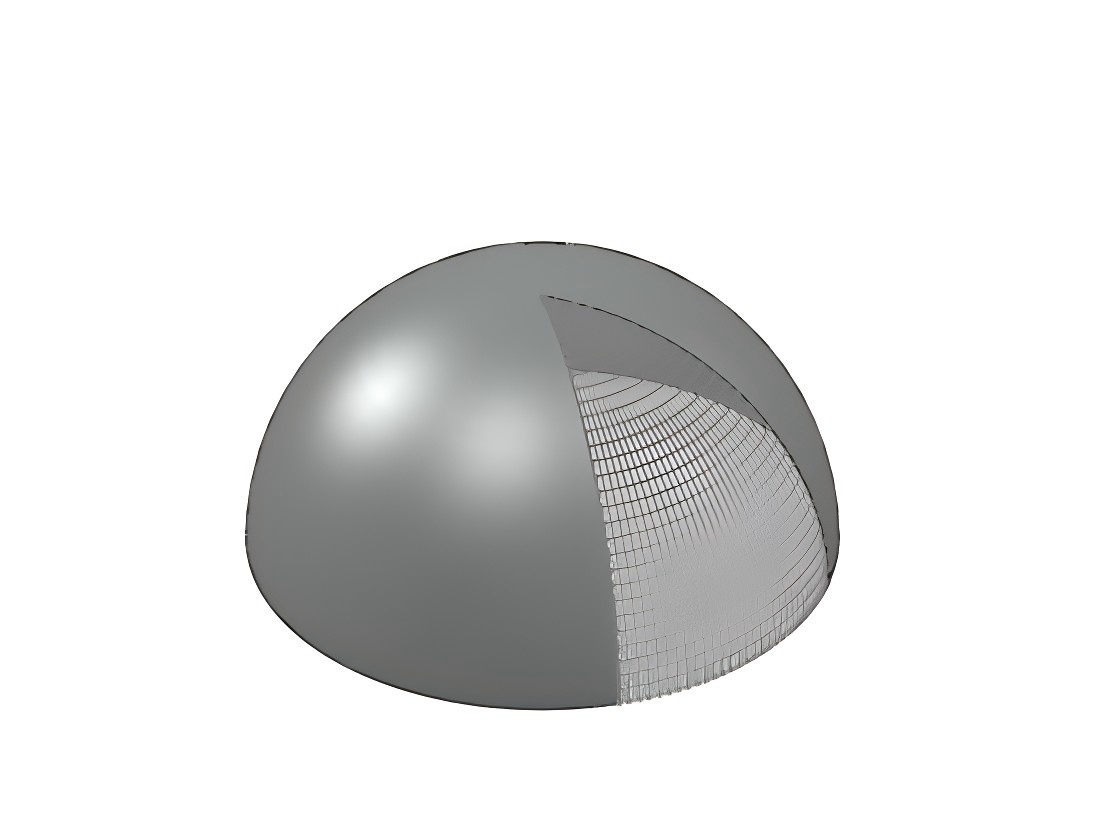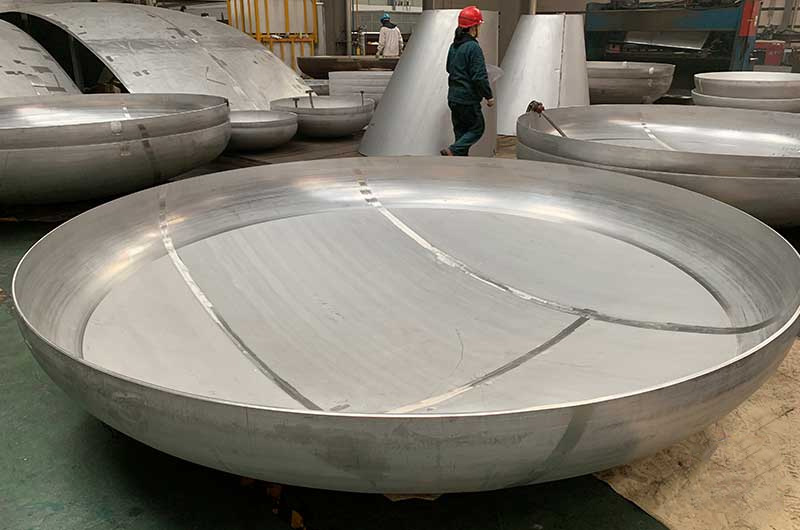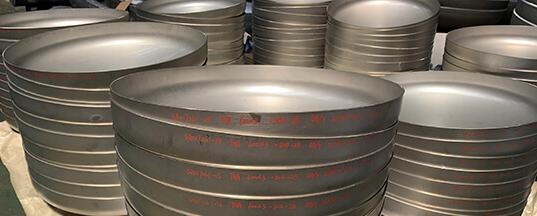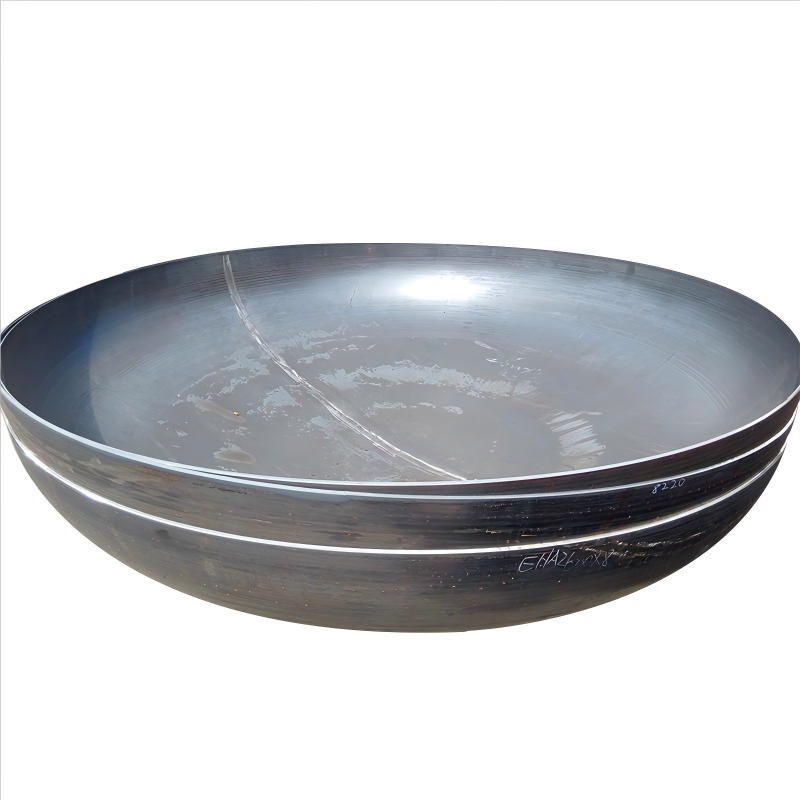Manufacturing Process for Duplex Stainless Steel Clad Steel Plate Heads
Upload Time:
Jan 10, 2025
Manufacturing Process for Duplex Stainless Steel Clad Steel Plate Heads
Cutting the Head Plate
To ensure there is sufficient material for height adjustments after forming, the blank plate is initially cut to a size of 1850mm. After cutting, the dimensions and surface quality of the head plate are thoroughly inspected. Any surface imperfections, such as scratches or dents, are repaired according to relevant standards. Non-destructive testing is conducted to verify the integrity of the repairs.
Mold Selection and Requirements
Due to shrinkage during cooling, the diameter of the thermoformed head reduces slightly, and the straight section of the head thickens. Therefore, the mold selected for forming must be larger than the theoretical inner diameter of the finished head. Typically, the upper mold matches the intended inner diameter, while the lower mold is slightly larger. Based on practical experience, the upper mold diameter is set at 1450mm, and the lower mold diameter is 1500mm. Additionally, to prevent contamination and surface damage to the stainless steel during pressing, both the upper and lower mold surfaces must be cleaned and polished before forming. High-temperature-resistant lubricating oil is applied to the contact edges to ensure smooth and clean contact surfaces.
Head Forming Process
During the forming process, the heating temperature, holding time, and cooling temperature must be precisely controlled. Both the head plate and a test plate are placed in a gas-fired furnace for heating. The target temperature is 1080±20℃, with a holding time of 0.5 hours. When removed from the furnace, the temperature is verified with an infrared thermometer, reading 1070℃. The head plate is then swiftly transferred to the hydraulic press using a forklift. The head plate is aligned with the mold center to ensure accurate one-time forming. Before pressing, the temperature is measured at 1050℃, and after final pressing, the temperature is 980℃. These temperature controls prevent the material from entering the embrittlement zone of the stainless steel coating, which occurs below 950℃.
Cooling and Spraying Process
To ensure there is sufficient material for height adjustments after forming, the blank plate is initially cut to a size of 1850mm. After cutting, the dimensions and surface quality of the head plate are thoroughly inspected. Any surface imperfections, such as scratches or dents, are repaired according to relevant standards. Non-destructive testing is conducted to verify the integrity of the repairs.
Mold Selection and Requirements
Due to shrinkage during cooling, the diameter of the thermoformed head reduces slightly, and the straight section of the head thickens. Therefore, the mold selected for forming must be larger than the theoretical inner diameter of the finished head. Typically, the upper mold matches the intended inner diameter, while the lower mold is slightly larger. Based on practical experience, the upper mold diameter is set at 1450mm, and the lower mold diameter is 1500mm. Additionally, to prevent contamination and surface damage to the stainless steel during pressing, both the upper and lower mold surfaces must be cleaned and polished before forming. High-temperature-resistant lubricating oil is applied to the contact edges to ensure smooth and clean contact surfaces.
Head Forming Process
During the forming process, the heating temperature, holding time, and cooling temperature must be precisely controlled. Both the head plate and a test plate are placed in a gas-fired furnace for heating. The target temperature is 1080±20℃, with a holding time of 0.5 hours. When removed from the furnace, the temperature is verified with an infrared thermometer, reading 1070℃. The head plate is then swiftly transferred to the hydraulic press using a forklift. The head plate is aligned with the mold center to ensure accurate one-time forming. Before pressing, the temperature is measured at 1050℃, and after final pressing, the temperature is 980℃. These temperature controls prevent the material from entering the embrittlement zone of the stainless steel coating, which occurs below 950℃.
Cooling and Spraying Process
After the hot-forming process, the head and test plate must be rapidly cooled to prevent the formation of brittle phases that can compromise toughness and corrosion resistance. Multiple nozzles are used to spray cooling water uniformly across both the inner and outer surfaces of the head. This accelerated cooling achieves a solution-treated state for the duplex stainless steel coating and normalizes the base carbon steel material.
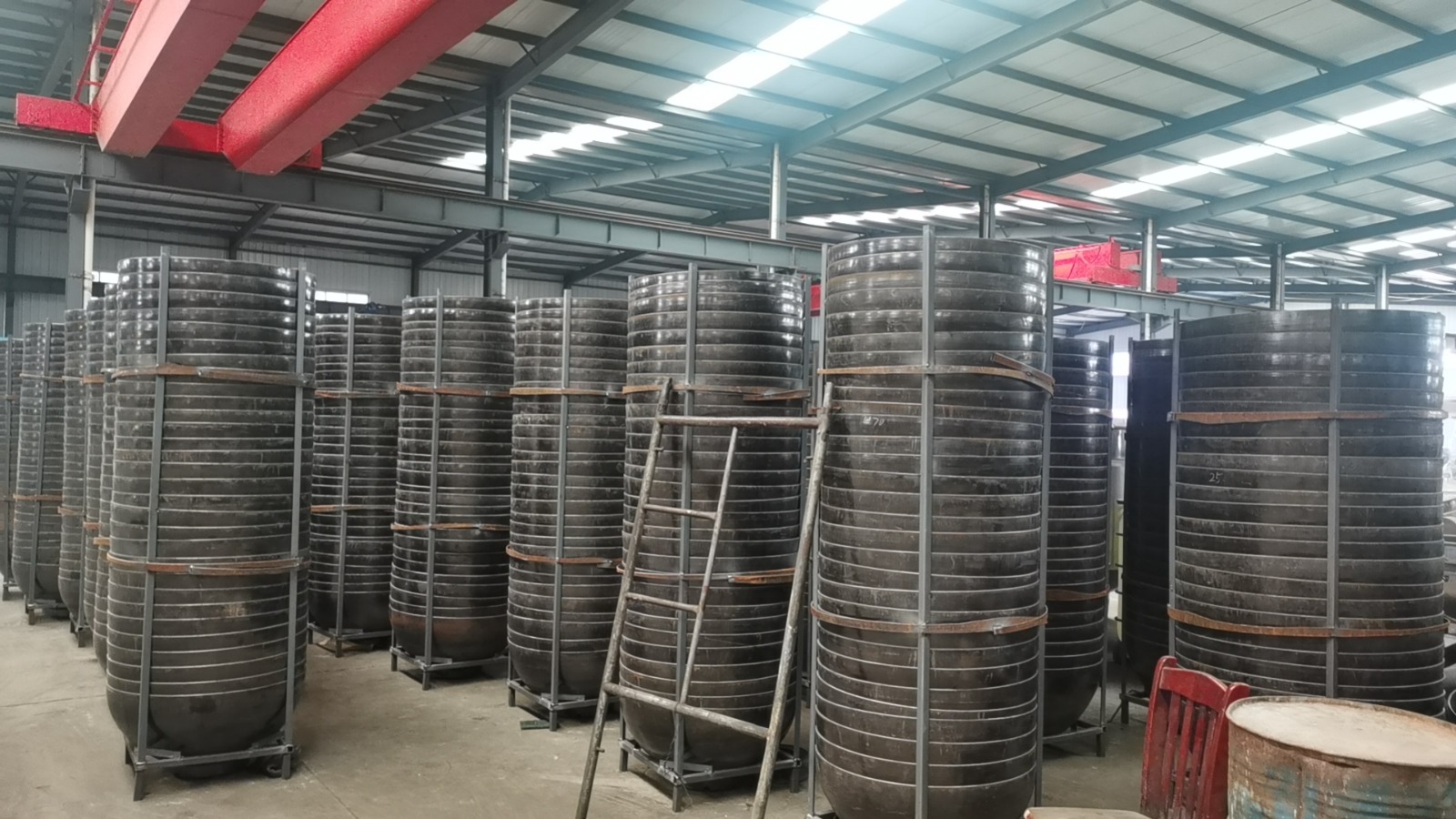
Relevant News
